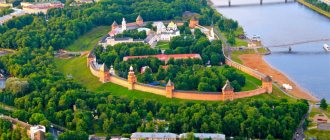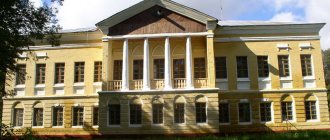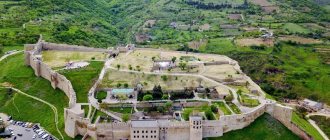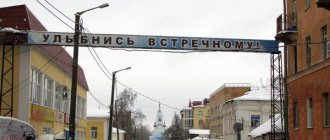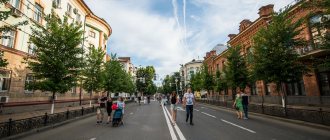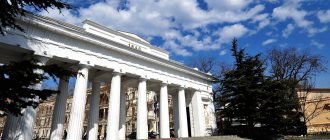What to see in Veliky Novgorod? This is a city that the Tatar-Mongols did not reach, getting stuck in the mud. The city where democracy came from and which was the center of the northern lands, a city where after the Second World War only 1000 people remained! The city has history and a lot to see.
Veliky Novgorod is an absolutely unique city. I especially like the history of its origin. The textbooks say: “Formed on the trade route from the Varangians to the Greeks.” In life, everything was a little simpler:
Trade caravans stopped for the winter in Lake Ilmen, then bearded men with clubs came out of the forest and asked to pay for the parking. Later, these bandits retrained as merchants and politicians, and also founded the richest and most influential city of ancient Rus'.
Of course, the city has something to boast about: This is Alexander Nevsky, who deceived and drowned the Swedish army at the age of 21; this is the first democracy, when Novgorodians decided everything at a general meeting (veche); This is also the first writing in Rus' on birch bark letters.
In general, Veliky Novgorod is an absolute concentration of gold, power, knowledge and freedom! All this happened before 1569, when Ivan the Terrible decided that the Novgorodians had gotten too greedy and went to war against them.
The war turned out so-so. Along the way, Tver, Klin and Torzhok were plundered. And when they approached Novgorod, the local nobility themselves went to a meeting with Ivan the Terrible to find out “what exactly was the matter.” Ivan the Terrible was not at a loss and tied everyone up there, accusing them of treason.
Then terrible things happened in the city: Officials and clergy were executed in batches, people were beaten to death in the streets with sticks, burned alive and tortured in every possible way. The Novgorod chronicler says that there were days when the number of those killed reached one and a half thousand; days in which 500 - 600 people were beaten were considered happy!
In Novgorod, everyone knows the legend: During these executions, a dove sat on the dome of the St. Sophia Cathedral, it looked down and could not withstand all the horror that was happening there. The dove was simply petrified with horror! He still sits on the upper cross.
By the way, the second legend is connected with this. They say that if the dove flies, Novgorod will be taken by the enemy. This is the honest truth, because... Since then, Novgorod has been taken only once: by the Germans in World War II. Then a bomb hit the dome of the cathedral and the dove fell down (well, it left its place).
After the raid of Ivan the Terrible, Novgorod fades into the background, it stops developing so actively and does not show itself in any way until the Second World War. Today it is a nice small city with a rich history.
What to see in Veliky Novgorod
So, you've arrived in town for the weekend. What to see in Veliky Novgorod in 1-2 days. Of course, you need to start from the historical center, because all the most interesting things are concentrated there. I will not describe all the sights for you and make some kind of TOP. This will be my personal recommendation of what is worth seeing and visiting in Veliky Novgorod.
Route in Veliky Novgorod for 1 or 2 days. Print it out and take it with you.
St. Sophia Cathedral of Veliky Novgorod
The cathedral is the main temple of the city and one of the oldest in Russia - it was built in 1050. Fragments of the dome painting, which were made in 1109, have survived to this day. On the main iconostasis of the church there are icons from the 20th century; icons from the 20th century are kept on display in the museum.
The cross of one of the church domes is crowned with the figure of a dove. Legend says that when Ivan the Terrible dealt with the inhabitants of Novgorod, a bird sat on the cross of Sophia. Looking at the cruelty that was happening, the dove was petrified with horror. Afterwards, the Mother of God revealed to one of the monks that this dove was sent to console the city - and until it flies off the cross, the city will be protected.
Kokuy Tower in the Kremlin
In the Novgorod Kremlin you can climb a real battle tower. Firstly, there is a good observation deck on the top floor, and secondly, it is the highest tower of the Kremlin. Well, in conclusion, this is the only tower so far where something interesting has been done inside. There are exhibitions of how Ivan the Terrible executed the Novgorodians. Many people praise, they say directly and the music and tests are perfectly chosen. You get immersed in the atmosphere.
For me it's just like an adventure! You are in a real tower, without tourist beauties and reconstructions. You can imagine yourself as an archer and understand what they could see from the loopholes; you can imagine yourself as a boyar and understand how life was generally lived in such conditions.
But the only problem is the opening hours.
Kokui Tower opening hours: From May 1: 12:00 – 20:00, break: 14:30 – 15:30, weekends: Mon, Thu, last Wednesday of the month, from November 5 closed for the autumn-winter period.
It would be written simply: open during the parade of planets, the passage of a comet or the arrival of V.V. Putin.
This is Kokui Tower. It is written on the tower that it is open only in the summer, but we also came in the summer - it was closed. You can see this tower in cross-section, as well as see a detailed map of the Kremlin with all the attractions in a separate article
Novgorod Kremlin (Detinets)
First of all, you need to visit the most famous fortress in Novgorod - the Kremlin, or Detinets. Having parked the car, we are approaching the Novgorod Kremlin. At the beginning of May it is already beautiful, spring colors are appearing: green grass is adjacent to trees waking up from winter hibernation.
The diagram of the Novgorod Kremlin was taken from the Internet:
We walked along the embankment:
We climbed up and looked around;
and then wandered to the walls of the Kremlin.
Bridge leading to the Resurrection Arch. The Clock Ringer peeks out from behind the fortress wall .
Resurrection Arch . Created on the site of the tower of the same name. Now this is one of two entrances to the territory of Detinets. Admission is free, only museums are paid here.
Entering inside the fortress walls, the first thing that catches your eye is the “Millennium of Russia” monument, whose height is 15.7 meters. You can look at the monument endlessly, because it includes 128 different figures! The monument is created in the shape of a bell. A huge ball dominates in the center - an orb, and the top is crowned with a cross.
The main attraction of Novgorod Detinets is St. Sophia Cathedral , or St. Sophia Cathedral. Built in 1045-1050. I just can’t believe how long the cathedral has been here. An innumerable number of people visited it. The temple is one of the most ancient in all of Russia.
Painting on the wall of St. Sophia Cathedral:
We move on slowly. The cannonballs caught my attention:
The clock ringing is a white clock tower. It is the tallest building of the Novgorod Kremlin. Its height is 40 meters. It was partially destroyed during the war, but has now been completely restored.
One of the Kremlin towers:
Metropolitan Tower borders the snow-white building of the Judiciary and Spiritual Orders with a wooden porch.
Sign on the tower:
The Metropolitan Tower is very beautiful, but you cannot go inside. By the way, now it is used as a warehouse, according to Wikipedia.
In addition to the towers and various buildings, you can see other attractions here. For example, old bells. Huge, with ancient inscriptions. You will find them near the Sofia belfry.
Church of St. Andrew Stratelates, XV-XVII centuries. Small rectangular church. At the top is a small belfry with one bell.
Since we visited Novgorod on the eve of May 9, we visited a small exhibition dedicated to Victory Day on the territory of Detinets. Perhaps the exhibits are always here, and not just for the holiday. I can not say exactly.
In the arches of the wall you can see black and white paintings - fragments of that time. On the lawn there is wartime equipment: a car, guns, a small copy of a pillbox, helmets and other small paraphernalia.
Then we examined the elephant sculpture:
It's time to climb the fortress wall. A look at the world outside Detinets:
I took a photo against the backdrop of the Detinets courtyard.
I also took a photo of Anton. He, poor thing, has to carry his bag and my camera in a case, since it’s hard for me myself.
